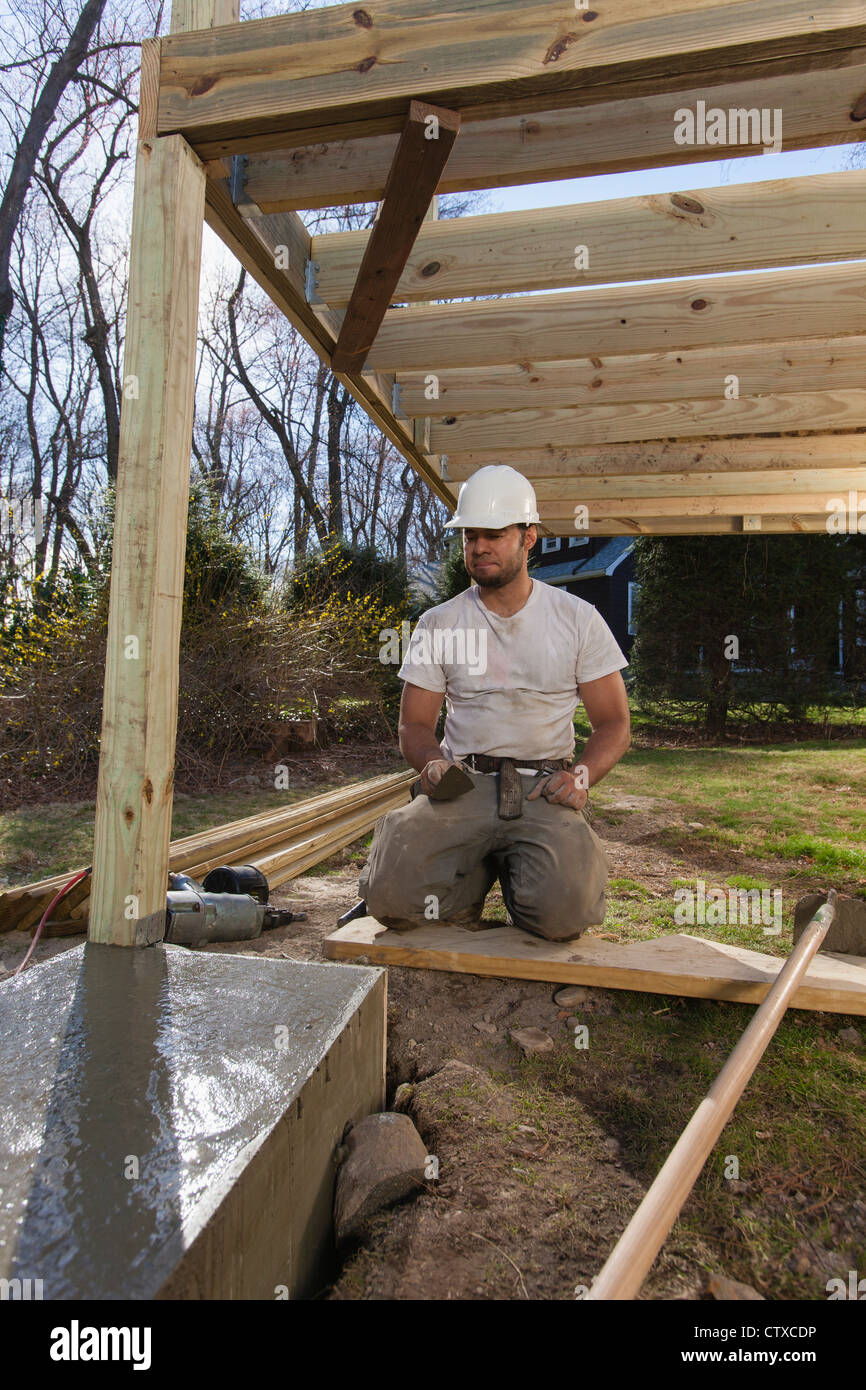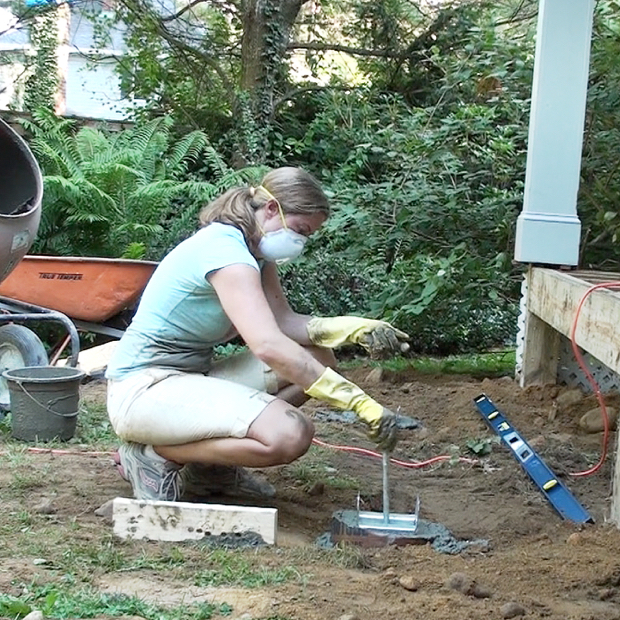Expert Tips for Installing Deck Footings to Support Your Outdoor Room
When it comes to building a deck, one of the most essential components to consider is the installment of correct footings. These grounds are the foundation upon which your outside area will rest, giving security and support for years to come. What exactly does it take to set up deck grounds appropriately?
Importance of Proper Deck Grounds
Correct deck grounds are crucial for ensuring the stability and durability of your exterior space. When constructing a deck, it is important to take notice of the foundation on which it will relax. Deck grounds give the essential support for the entire structure and aid disperse the weight uniformly - Deck Footings. Without strong and correctly installed footings, your deck may come to be unpredictable, resulting in safety and security risks and costly repairs.

In addition to stability, correct deck grounds also add to the longevity of your exterior space (Deck Footings). Grounds that are designed and constructed to hold up against the elements and dirt problems in your area will certainly help stop the deck from clearing up or moving with time. By making certain the footings are properly sized and mounted, you can reduce the risk of damage to the deck framework, extending its life-span and lowering the requirement for expensive repairs or substitutes

Selecting the Right Kind Of Footings
When choosing the proper kind of footings for your deck, it is necessary to consider aspects such as dirt conditions, neighborhood building regulations, and the general style of your exterior space. The type of footing you pick will certainly play a vital duty in guaranteeing the security and long life of your deck.
One usual type of ground is the concrete ground. Concrete grounds are ideal for a lot of dirt problems and offer superb support for decks.
Sometimes, you may need to utilize specific footings, such as heap grounds or deep structures, if you are constructing a multi-level or big deck. These footings are designed to disperse the weight of the deck over a larger area, ensuring security and protecting against settling or sinking.
Before choosing a sort of ground, it is necessary to speak with neighborhood building ordinance and laws to guarantee conformity. Additionally, consider the layout and planned use your exterior space. Aspects such as the dimension, form, and load-bearing needs of your deck will affect the sort of footing that is most ideal.
Preparing the Ground for Footing Setup
To correctly prepare the ground for footing setup, it is very important to analyze the dirt problems and take necessary steps to make sure security and toughness of the deck. The initial action is to dig deep into the location where the footings will be installed. The deepness of the excavation will depend on the frost line in your area and the specific needs of the deck layout. It is necessary to get rid of any greenery, rocks, or particles from the excavation to ensure a solid structure.
As soon as the area has actually been excavated, the next action is to small the soil. This can be done utilizing a plate compactor or by utilizing a hand tamper. Compacting the dirt aids to eliminate any kind of spaces or air pockets, which can bring about working out and instability over time.
After condensing the dirt, it is necessary to lay a layer of crushed rock or smashed stone at the end of the excavation. This will certainly give drain and aid to stop water from pooling around the footings, which can lead to erosion and instability.
Step-by-Step Overview to Installing Deck Footings
After appropriately preparing the ground for footing installment, the next step is go to website to begin the process of installing deck grounds. This step-by-step guide will give you with a clear understanding of how to mount deck footings for your outdoor room.
Establish the location: Start by noting the positions of the deck footings utilizing risks and string. Make certain that the locations straighten with the layout and design of your deck.
Dig the openings: Use a post opening digger or an auger to dig the holes for the footings. The deepness and diameter of the holes should remain in conformity with regional structure codes and the certain needs of your deck design.
Degree the openings: Use a degree to make certain that the holes are dug to the appropriate deepness and are degree with each various other. (Deck Footings)
Include gravel: Place a layer of gravel at the end of each hole to boost water drainage and avoid the wood from decomposing.
Insert the footings: Place the grounds right into the openings, ensuring they are degree and plumb. Utilize a level and a gauging tape to ensure precision.
Protect the grounds: Pour concrete right into the openings around the grounds, loading them to the top. Use an article degree to make certain the footings stay level as the concrete collections.
Allow time for treating: Let the concrete remedy according to the maker's guidelines prior to waging the deck construction.
Typical Blunders to Stay Clear Of During Footing Installment
One crucial facet to take into consideration during the setup of deck grounds is avoiding usual mistakes that can jeopardize the stability and durability of your outdoor room. While deck grounds might seem like a uncomplicated and straightforward component of the construction procedure, ignoring particular factors can result in expensive repairs and prospective safety and security dangers down the line.

Furthermore, disregarding to set up proper drainage actions can cause water to collect around the grounds, leading to rot, degeneration, and the eventual weakening of the deck's structure. Using the incorrect kind of footing product or falling short to properly protect the footings can jeopardize their structural integrity.
To stay clear of these mistakes, it is vital to speak with an expert or follow market guidelines to make certain proper footing installation. By doing so, you can make certain the security and long life of your outside room, home giving a secure and satisfying atmosphere for look these up many years ahead.
Final Thought
Finally, mounting proper deck grounds is critical for the security and long life of your exterior area. By picking the appropriate type of footings and sufficiently preparing the ground, you can guarantee a solid foundation for your deck. Complying with a detailed overview and avoiding common mistakes throughout footing installment will certainly additionally improve the toughness and safety and security of your deck.
Correct deck footings are crucial for guaranteeing the security and long life of your exterior space. The grounds serve as a link in between the ground and the deck, allowing the weight of the deck and its passengers to be distributed uniformly right into the soil.One common kind of ground is the concrete footing. Insert the footings: Place the grounds into the openings, making sure they are level and plumb. Safeguard the grounds: Put concrete into the openings around the footings, loading them to the top.